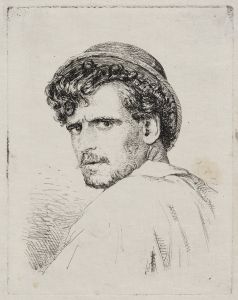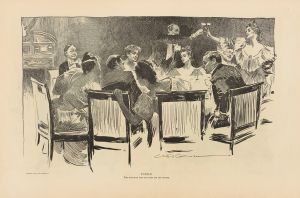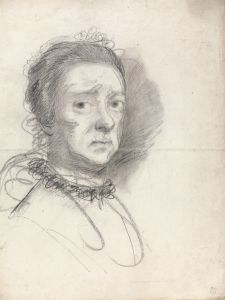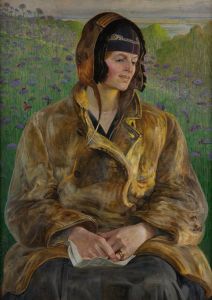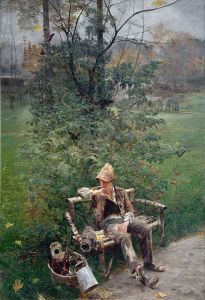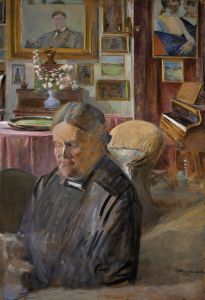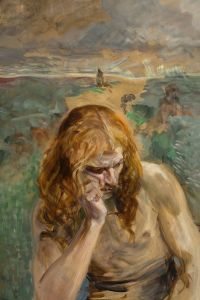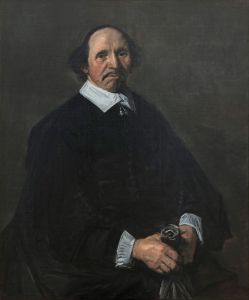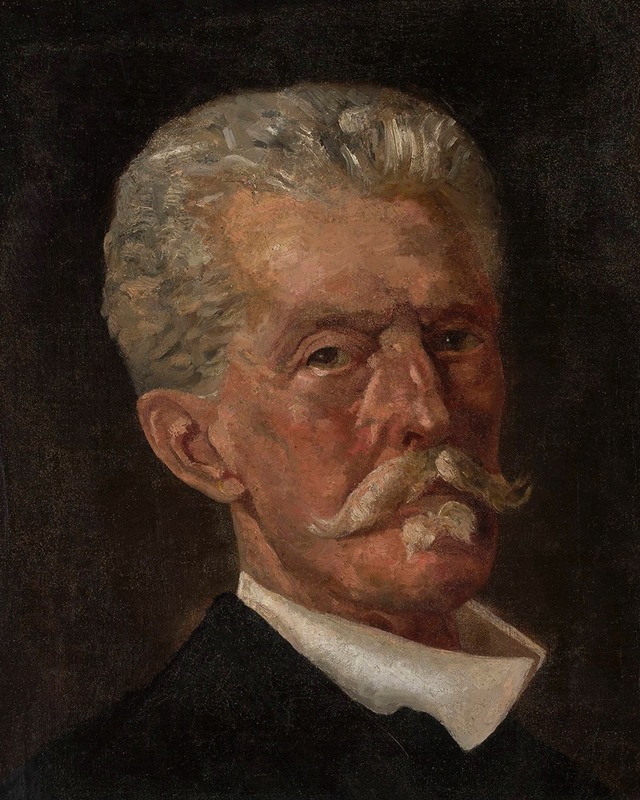
Head of a man
A hand-painted replica of Jacek Malczewski’s masterpiece Head of a man, meticulously crafted by professional artists to capture the true essence of the original. Each piece is created with museum-quality canvas and rare mineral pigments, carefully painted by experienced artists with delicate brushstrokes and rich, layered colors to perfectly recreate the texture of the original artwork. Unlike machine-printed reproductions, this hand-painted version brings the painting to life, infused with the artist’s emotions and skill in every stroke. Whether for personal collection or home decoration, it instantly elevates the artistic atmosphere of any space.
Jacek Malczewski, a prominent Polish painter associated with the Symbolist movement, is known for his unique style that often blends realism with fantastical elements. One of his notable works is "Head of a Man," which exemplifies his skill in portraiture and his interest in exploring the human condition.
"Head of a Man" is a painting that captures the essence of Malczewski's artistic vision. Although specific details about the creation date or the exact subject of this painting are not widely documented, it is consistent with Malczewski's broader body of work, which frequently features introspective and expressive portrayals of individuals. His portraits often delve into themes of identity, existential reflection, and the interplay between the physical and spiritual realms.
Malczewski was born on July 15, 1854, in Radom, Poland, and was deeply influenced by the socio-political climate of his time. Poland was partitioned during his lifetime, and the struggle for national identity and independence is a recurring theme in his work. This context often informed his artistic choices, leading him to infuse his paintings with symbolic elements that resonate with Polish cultural and historical narratives.
In "Head of a Man," Malczewski's use of color, light, and shadow demonstrates his technical prowess and his ability to convey emotion and depth. The subject's expression might reflect a sense of contemplation or melancholy, inviting viewers to ponder the inner life of the individual depicted. This focus on the psychological and emotional state of his subjects is a hallmark of Malczewski's portraiture.
Malczewski studied at the School of Fine Arts in Kraków and later in Paris, where he was exposed to various artistic movements and techniques. His education and travels enriched his style, allowing him to develop a distinctive approach that combined elements of Symbolism with Polish folklore and mythology. This synthesis is evident in many of his works, where he often incorporates allegorical figures and motifs.
Throughout his career, Malczewski received recognition for his contributions to Polish art. He was a professor at the Academy of Fine Arts in Kraków and played a significant role in shaping the next generation of Polish artists. His influence extended beyond his lifetime, as his works continue to be celebrated for their emotional depth and cultural significance.
While "Head of a Man" may not be as widely discussed as some of Malczewski's other paintings, it remains an important piece within his oeuvre. It reflects his enduring interest in the human psyche and his ability to capture the complexities of human emotion through portraiture. Malczewski's legacy as a master of Symbolism and a key figure in Polish art history is firmly established, and his works, including "Head of a Man," continue to be studied and appreciated for their artistic and historical value.





